TAFNER FAMILY
Written by Andrey José Taffner Fraga and Maria Antonietta Bellato Tafner based on the books “Família Tafner: surgimento e trajetória, na Europa e no Brasil” (“Tafner Family: emergence and trajectory, in Europe and Brazil” – no English version – Blumenau, “3 de maio”, 2017) and “I Tafner” (Trento, 1995).
English translation assistance from Renan Phelipe Taffner Fraga (Blumenau, SC/Brazil) and Daniel Tafner McGarry (San Francisco, CA/USA)
(Variations of the surname: TAFFNER, TAUFNER, DAFFNER, TAFINE, THAOFNÀR, TAUFER, TAOFNER, THAUSER, THUNER, THAUFER, TAUFFNER, TAUFERSER, TAUFERER, TAFSER, TAUFSER, TAUSNER).
Tafner is a surname of Germanic origin, linked to the ancient word Tauf that means abyss, cliff, steep path between mountains or canyons.
The surname is widespread in the Alpine region of German-speaking countries including Germany, Austria and Switzerland. In Italy, it only exists in the Trentino-Alto Adige region.
In northern Italy, more specifically in the heavily Germanic province of Bolzano, there are many places called “Tauf” and other variations of this root.
In the northern reaches of Bolzano, the Val di Tures (in German, Tauferer Ahrntal) region was once politically centered in Castel Tures (in German, Schloss Taufers) and ruled by the dynasty of Signori di Taufers (Herren von Taufers), which was extinguished in 1340.
In the first half of the 13th Century, the Bishops of Trent initiated campaigns to encourage the immigration of Germans to colonize less populated areas of Trentino, among these areas was Val dei Mocheni. At that point, the first member of the Tafner family (still without the name) arrived in Trentino.
Early years of the family in Val dei Mocheni (Trentino)
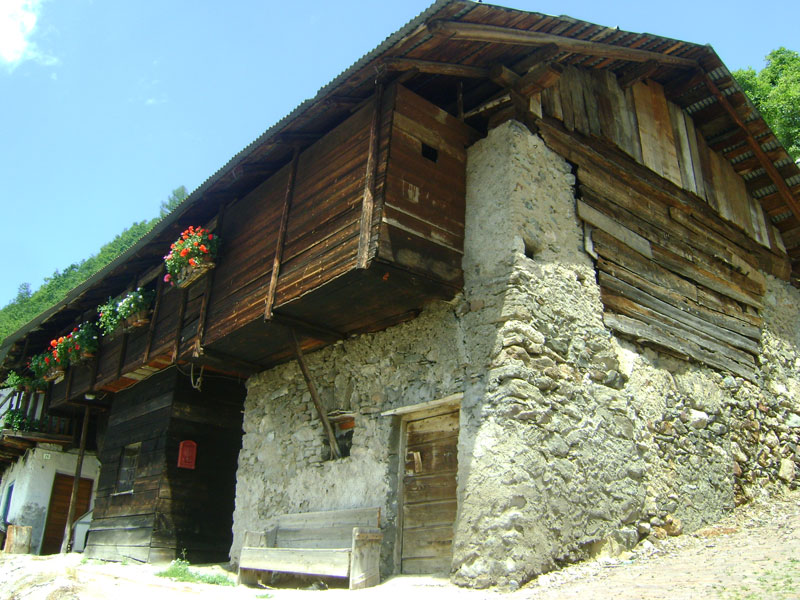
The Val dei Mocheni region of Trentino still preserves its Germanic influences to the present day, including its language, an offshoot of German from the 13th century.
The valley is part of Alta Valsugana (eastern region of Trentino) and includes the cities (paesi) of Frassilongo, Fierozzo, Palù di Fèrsina and S. Orsola Terme. The valley contained few solid communities prior to the 13th century when the first German immigrants arrived, mainly from Bavaria and Bohemia, joined by immigrants from Tyrol.
Initially, the pioneers devoted themselves to farming. Later, with the discovery of mineral mines in the region, immigrants began taking advantage of the natural resources available. As a result, the flow of German emigrants increased further, dividing the local population into two categories: the “canopi” (mine workers who worked underground) and the “roncadori” (above-ground workers who produced charcoal for the furnaces where the minerals were processed).
The “Val dei Mocheni” had long been known for its isolation and self-sufficiency. Traders from Palù di Fèrsina were the only residents who periodically left the Valley on business. As a result of the valley’s isolation, its Germanic characteristics remained intact, making it a German cultural and linguistic island inside the Italian territory to the present day.
The history of the Italian branch of the Tafner family (which also has branches in Brazil and in the USA) begins in this valley, more precisely in a place called Tovo (Tauf in German) located on the mountain of Palù di Fèrsina. At the time, surnames were meant to indicate the place of origin or residence where the person came from. The Tafners followed this pattern: Antonio Taufner meant Antonio from Tauf/Tovo. In German, the suffix “er” indicates origin, so Taufner means “from Tauf”.
Between the 13th and 14th centuries, Europe began to use surnames to identify people, a practice that had fallen into disuse since the end of the Roman Empire. The process of designating surnames advanced slowly over the years, into the second half of the 16th century. From that time on, as a result of decisions made by the Council of Trent, all Catholic priests worldwide began to register baptisms, chrisms, marriages and funerals. These records make today’s genealogical research possible.
Prior to the decision of the Council of Trent, available sources for genealogical research include notarial records, minutes of meeting and military conscription lists. While these documents can be useful, they don’t provide enough information to determine a family tree, primarily because they typically mention nothing more than names, lacking any more precise information such as birthdates. In any case, the first available records of the Taufner family in Val dei Mocheni include the following:
- 1406: Thomas who lived in Fierozzo;
- 1491: Linhart (Leonardo) who lived in the Taufnerhof (Maso Taufneri, in Italian) from Roveda (which is a district of Frassilongo);
- 1524: Antonius who lived in Roveda;
- 1525: Lorenzo who lived in Roveda.
The German term Taufnerhof means “the maso / hof of the Taufner family”. The “maso” (or “hof” in German) is a common type of property in the mountainous regions of Germany, also widespread in Trentino, especially in the Val dei Mocheni. The “maso” or “hof” is an isolated and self-sufficient structure that may include a house, a stable, a barn, a pasture and a vegetable garden. Typically, a maso could be expected to provide sustenance and livelihood for all of its residents.
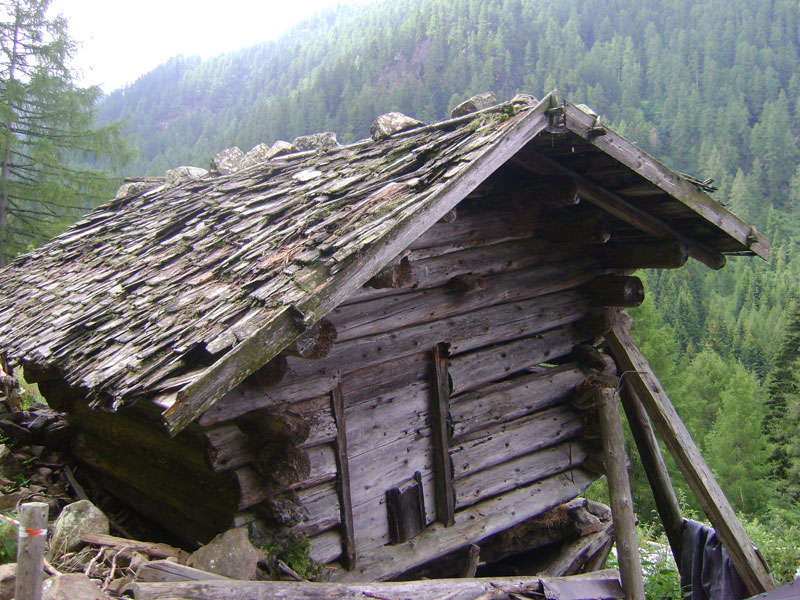
When the Taufers left the village of Tauf / Tovo in 1400, after a brief stop in Fierozzo they settled in Roveda. Both Roveda and Fierozzo are part of Val dei Mocheni. Once there, the family was granted land by noble lords, in exchange for rent paid in the form of services or products. On this land they built their maso (the Taufnerhof). They remained in that location until the beginning of 18th century. The place has been known as Taufnerhof (or Maso Taufneri, in Italian) from that time to the present day.
Farming on top of mountains is an activity fraught with challenges: steep terrain and short planting seasons drastically reduce the quantity and quality of production to the point that it barely serves the purpose of feeding the family. Mountain farmers struggled to cultivate corn and other basic goods.
Under these circumstances, the way of life in a family house such as this adapts to its circumstances: when the head of the family dies, the inheritance goes to the eldest son. Then, the remaining men on the property (brothers, brothers-in-law and their families) continue to work together for the family. For this reason, the Taufner family remained united through centuries of life in Val dei Mocheni. However, female family members typically would leave the “maso” after getting married.
The family had acquired their surname, Taufner, almost two centuries before the Council of Trent. The first document that mentions the location of Tovo / Tauf dates to 1373: a parchment containing the Latin words: “super Monte Paludis ubi dicitur al Tovo”, meaning “on the hill of Palù* in the place of Tovo / Tauf “. At that time, the family was already established in Val dei Mocheni and was probably already identified with their place of origin. *Palù refers to the town of Palù del Fersina, in the Val dei Mocheni
Around the 1700s, the entire Val dei Mocheni region experienced a crisis as the mines were gradually depleted, and the “canopi” faced unemployment. Other natural resources such as wood– indispensable for producing the charcoal needed for the furnaces– also neared depletion, which put farmers and the “roncadori” at risk of unemployment too. The Taufners belonged to the roncadori group.
In addition to the crisis in Val dei Mocheni, the Taufner family also experienced a crisis of their own: the four adult men living in the Taufnerhof– Francesco, Giorgio, Michele, and Antonio– had no male children. With no male offspring, the family lacked the means to continue the work needed to provide for themselves. For this reason, the maso had to be abandoned, ending a long period of the family living in Vale dei Mocheni. After that, the history of the family continues with Giorgio, as the other adult men of the maso never had any children.
The long journey in the Trentino province
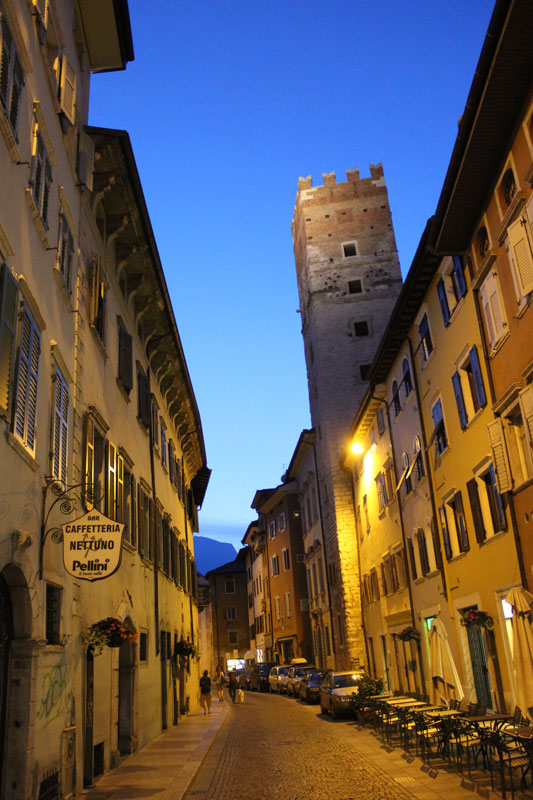
Giorgio moved to the town of Zell, which belonged to the city of Cognola, a few kilometers outside Trento. In 1716, Giorgio was 53 years old, which was considered very old at the time. However, despite the odds against him, he managed to get married. Any Tafner with Trentino origin owes his or her existence to the fact that a woman named Dominica Correri agreed to marry an old “mocheno.” As with any other person from the Val dei Mocheni who had little or no contact with Italian culture, Giorgio could speak only the German Mocheno dialect and lived by old German habits seen as barbarian by Italians.
As if it wasn’t fortunate enough that Giorgio was able to get married under these circumstances, even more miraculous is the fact that the couple gave birth to three children. Only one of the three, Antonio, had male children (in Italy, only men could give their surname to their children). His brother Matteo had only daughters, while the third, Francesco, died a few days after being born.
Once again, the fate of the Tafner family in Trentino was in the hands of a single person, Antonio, who married and moved to the town of Gardolo a few kilometers to the north of Trento. He had ten children. Out of these, only two, Giovanni Giorgio and Giovanni Andrea, had male children.
After his marriage, Giovanni Giorgio moved to Trento where he found work, and later to Villazzano, a small town on the hills to the east of Trento. Meanwhile, Giovanni Andrea found himself widowed and childless in the town of Gardolo, which inspired him to move to Villazzano, where he remarried and had seven children. Later, Giovanni Andrea would become the patriarch of the Tafner family in Mattarello.
While the genealogy of Giovanni Giorgio was quite extensive, Giovanni Andrea’s was not. Again in the family’s history its continuity depended on a single son. Andrea Antonio was born in 1785 and, as a child, experienced the fateful year of 1796 when Napoleon invaded the Trentino. Napoleon brought a war that lasted until 1813, when the Trentino was annexed to the Austro-Hungarian Empire under the name of South Tyrol / Welschtirol.
Due to the war, Andrea Antonio spent much of his childhood and youth surrounded by violence and epidemics brought by foreign armies, who would also pillage plantations, devastate fields and bring misery to the civilians during the darkest period in the history of the province.
Having survived that period, Andrea Antonio married Marianna Ferrari in Villazzano. Together they had ten children before moving in 1830 to Mattarello, where the couple gave birth to two more daughters: Giuditta Lucia (1832) and Marianna (1836).
Mattarello was the last part of a journey that had lasted more than one century for the family, a journey common to most Trentino families: as they didn’t own property, they constantly moved in search of better living and working conditions.
All the cities mentioned (Zell di Cognola, Gardolo, Villazzano, Mattarello) were autonomous at the time. However, after World War I they became “frazioni” (districts) of the city of Trento.
Crisis in the Province of Trento – immigration
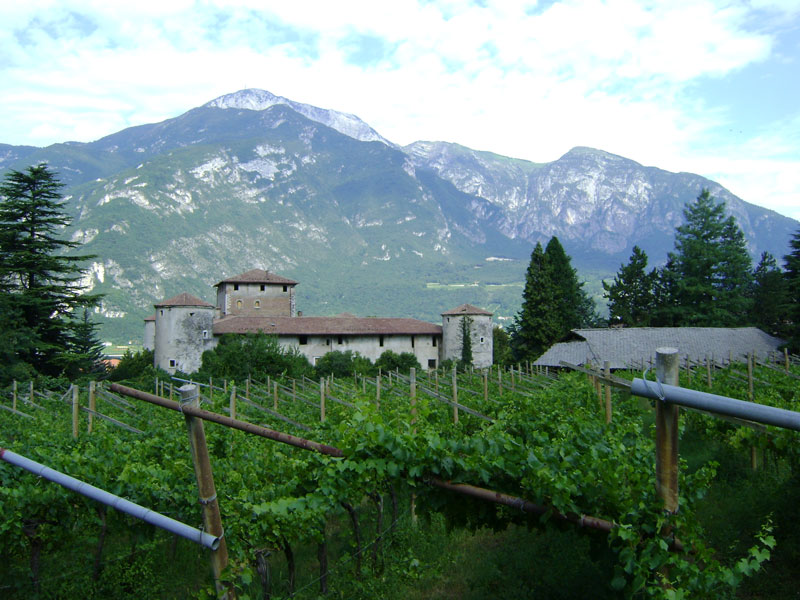
By the time Trentino was annexed to the Austro-Hungarian Empire its economic conditions were disastrous. The most fertile, flat soils in the regions of Valsugana and Valle dell’Adige had been used as battlefields in several conflicts during the Napoleonic wars. A difficult reconstruction began, made even more difficult by various calamities: the year 1816 became known as the “year without summer” or “year of starvation,” caused by a climatic phenomenon that reduced the temperatures of the summer to those of the winter and destroyed all crops in the region. The phenomenon may have been caused by a volcanic eruption. Between 1836 and 1855, cholera epidemics decimated the population; the silk production sector, one of Trentino’s most important industries, suffered from epidemics that decimated the silkworm; the ownership of lands centralized in the hands of a few noble families who kept the great part of the population of Trentino in misery. And finally, as a consequence of the unification of Italy in 1861, Trentino became a border region and lost free access to its southern markets.
In Mattarello, at the end of August 1875, a storm completely destroyed the corn and grape crops just before the harvest, leaving the population without the necessary resources to survive during the winter.
As noted previously, this branch of the Tafner family (Andrea Antonio with wife and children) moved to Mattarello in 1830. From that moment on, the surname finally became “Tafner” instead of “Taufner” due to a spelling mistake made while registering the first baptism in Mattarello, which was then repeated in all other parish registers. The other branch of the family (descendants of Giovanni Giorgio, who remained in Villazzano) kept the original surname, Taufner (occasionally seen as Taofner), at least until the end of World War I.
Out of the ten children of Andrea Antonio, only three had male descendants: Andrea Dominico, Giovanni Antonio and Giuseppe Antonio Fortunato. All three were married in Mattarello.
In 1843, Giovanni Antonio married Cattarina Zamboni. This marriage produced eight children: Giovanni Antonio (1844), Maria Cattarina (1846), Angelo Marcello (1849), Domenico Giovanni (1852), Lorenzo Giovanni (1854), the twins “Innominato” (stillborn, baptized by the midwife) and Augustus Agostino (1857), and finally, Maria Luigia, who was born an orphan (May, 1862), as her father died six months earlier due to an aneurysm.
The Tafner Family experienced dramatic conditions in Mattarello: the first-born Giovanni Antonio prematurely became the head of the family at the age of 17. Alongside his mother, he had to provide for the entire family. These were years of great struggle, which ended with the death of Maria Luigia, the youngest of the children.
Over time, the other children grew old enough to help with the fieldwork and with daily tasks. But by the 1870s, rumors started circulating in the fields and taverns, and in meetings with friends and relatives that in a country far away, across the ocean, there was plenty of land waiting for someone to take it, land available to be exploited by those peasants who had never possessed land of their own. Nobody in Trentino had any idea about what the ocean was like. Nobody had ever seen it.
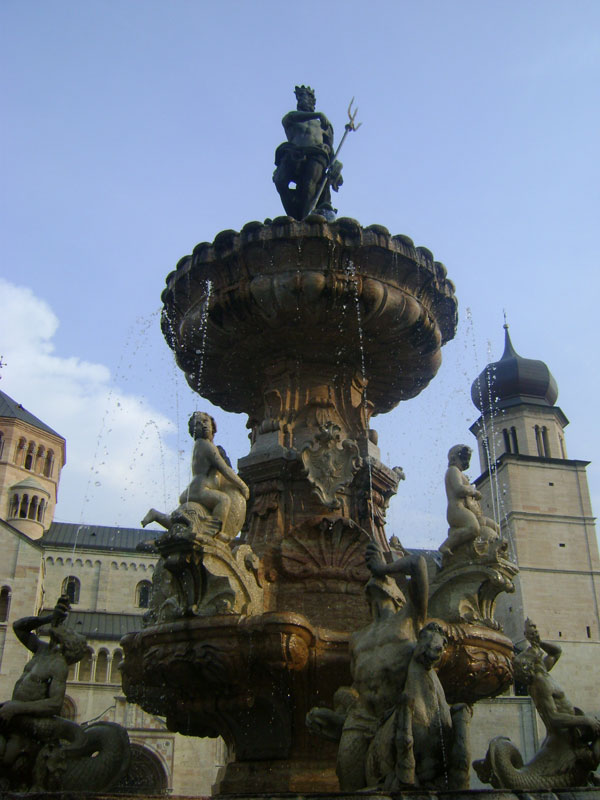
Angelo Marcello was the first to emigrate to Rio dos Cedros, Brazil, in the spring of 1876. After him, the brothers Domenico Giovanni and Augusto Agostini emigrated together in the autumn of 1877. The first brother went to a colony called “Salto Grande” in the state of São Paulo, and the second to the city of Amparo also in the state of São Paulo. Lastly, the first-born Giovanni Antonio decided to emigrate to São Paulo with his wife and children in the autumn of 1881.
Only one of the brothers remained In Mattarello, Lorenzo Giovanni. He would be responsible for the continuity of the family in Trentino.
It’s important to note that other cousins, including cousins of Angelo and his brothers, also emigrated. They are: Maria Luigia (born in Mattarello, 22/10/1845 – emigrated with her husband Quirino Perini and their children); Anna Cattarina (born Mattarello, 30/07/1849 – emigrated with her husband Francesco Perini and their children); Giovanni Battista (born in Mattarello, 19/05/1852 – emigrated alone); Speranza Teresa (born in Mattarello, 07/07/1854 – emigrated to Rodeio /SC, Brazil, with her husband Giosuè Bernardo Fiamoncini); Domenico (born in Mattarello, 17/09/1854 – emigrated to Brazil, to Freguesia / ES); and Maria Anna Luigia (born in Mattarello, 03/03/1859 – widow, emigrated with her children to Brazil, to Santa Teresa / ES).
The following aunts of Angelo and his brothers also emigrated: Domenica (born in Villazzano, 17/11/1825 – emigrated to Brazil with her husband Giovanni Battista Carlini and her four children, having settled in the colony of Santa Leopoldina, in the State of Espírito Santo); Giuditta Lucia Tafner (born in Mattarello, 20/05/1832 – a widow, emigrated to Brazil with her brother-in-law and her seven children, having settled in the Santa Leopoldina colony, in the State of Espírito Santo); and Marianna Tafner (born in Mattarello, 08/09/1836 – emigrated to Brazil with her husband, Giovanni Battista Bonatti, having settled in Rio dos Cedros / SC).
They all emigrated “illegally”, hoping not to lose the citizenship rights of the Austro-Hungarian Empire, which cancelled citizenship automatically for all those who emigrated. For the emigrants, it was important to know that, in case everything went wrong, there was the possibility of return, a “Motherland” that would welcome them back. But that would not be the case: all Tafner emigrants had their Austro-Hungarian citizenship canceled.
Tafner Family Trajectory in Santa Catarina

The story of the Tafner family in Santa Catarina, more specifically in “Vale do Itajaí”, began with the arrival of Angelo Tafner, who settled in the community of Santo Antônio, in Rio dos Cedros (which belonged to Blumenau at the time). This community was formerly called Mattarello – Matarel as a tribute to the immigrants’ hometown.
As Angelo Tafner had his origins in “Val dei Mocheni”, he kept alive the old German dialect of his family, despite speaking the Trentino dialect. Speaking two languages/dialects allowed him to assist Dr. Blumenau as a translator and enabled him to communicate better with the other Italian immigrants. Dr. Hermann Bruno Otto Blumenau was the director of Blumenau colony, himself an immigrant from northern Germany.
Interestingly, the Tafner family preserved its German and Italian dialects, as the family had Italian origins but settled in an area populated by German immigrants, between the cities of Rio dos Cedros and Pomerode, in Santa Catarina.
Like some other Trentini pioneers, the Tafners located in the “Pommernstrasse”, the “Street of the Pomeranians” – name given to the location by the previous Germans colonists from Pommernland.
Angelo married Angela Lucia Perini, daughter of Francesco Perini and Lucia Girardi, also immigrants from Mattarello. They had five children: Guglielmo, José Francisco (died at the age of seven), Giovanni Erminio, Albina Maria Teresa and Cattarina Melania. The first plot of land occupied by the Tafner family was number 59. The rough but fertile lands of Rio dos Cedros yielded good results in exchange for hard work.
The life of the pioneering couple, as with other immigrants, was extremely difficult. Perhaps Angelo found in his DNA the family’s abilities from Val dei Mocheni, where the “roncadori” had to conquer the forests to create arable land. Centuries later that story repeated itself in Brazil. The huge obstacles and challenges met by the immigrants were only overcome with the help of an unshakable faith in God, a solid family structure and arduous work.
Today, the descendants of Angelo Tafner can be found in almost any town of “Vale do Itajaí,” several of which have built distinguished careers, showing some of the fruits of the efforts of their ancestors.
Tafner Family in the United States of America (by Daniel Tafner McGarry – San Francisco, California / USA)
Besides the Tafners who immigrated to Brazil, two other members of the Tafner family separately immigrated to the USA in the early 1900s: Albino and Eugenio Francesco Tafner.
Albino Tafner was born in Mattarello, 09/14/1885, the great-grandson of Andrea (second cousin of Angelo Marcello, who immigrated to Brazil). He arrived in the United States in 1906, at the age of 21, settling in the town of Mt. Carmel in the state of Pennsylvania, where his descendants live to this day.
Eugenio Francesco Tafner (born 06/09/1871 in Trento) arrived in the United States in 1906, at the age of 34. He settled in the eastern part of Ohio in a mining area adjacent to the that in which his cousin Albino settled, and there married Viola Maria Pedri. He had three children, including Eugene Richard Daffner (born 05.09.1910). This region of the United States attracted many Italian immigrants at the turn of the 20th century. In 1924, with the death of his wife Viola, Eugenio and his children left for Sunshine, Victoria (Australia) where he worked in the tin mines. In 1926, he returned to the United States, settling in San Francisco, California to raise his family. Today, most of his descendants live in the vicinity of San Francisco Bay Area.
These two branches make up the Tafner family in the United States. Some members of the family acquired the surname “Daffner,” possibly as an adaptation to the English pronunciation of the surname or simply to error.
Website by Andrey José Taffner Fraga and Renan Phelipe Taffner Fraga.
Copyrighted content